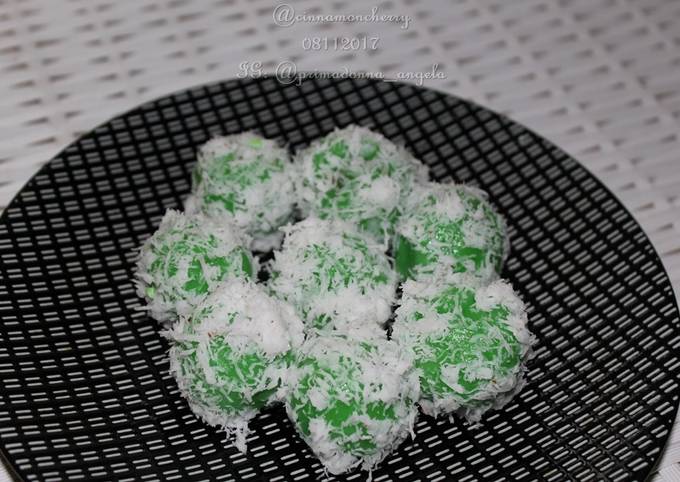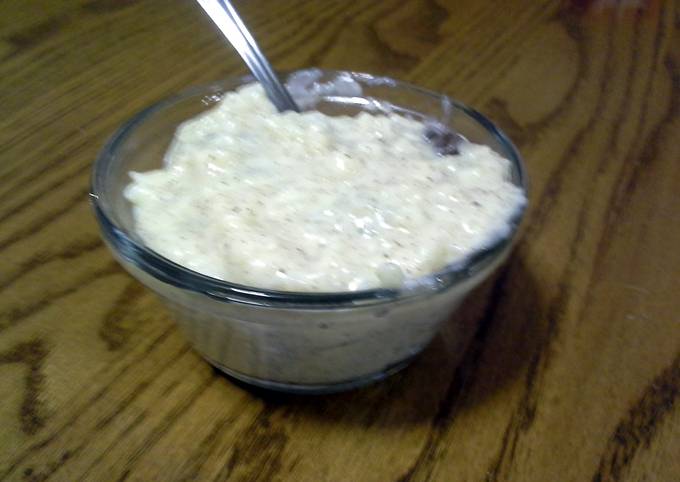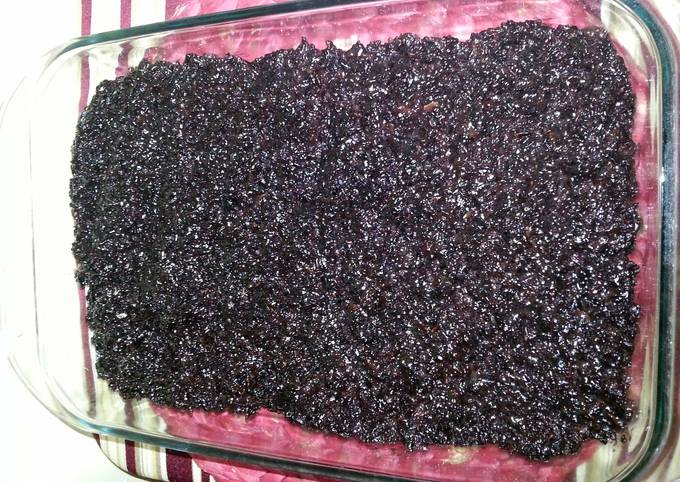
Hey everyone, hope you are having an incredible day today. Today, I’m gonna show you how to make a distinctive dish, klepon (traditional indonesian kue). It is one of my favorites food recipes. This time, I will make it a bit tasty. This is gonna smell and look delicious.
Great recipe for Klepon (Traditional Indonesian Kue). Klepon is one of market munchies, famous in Indonesia and neighboring countries (Malaysia, Singapore, Brunei). When I was growing up, some also call this onde-onde, even though most people living in Java island would associate onde-onde with. Bring water in a deep pan to a boil.
Klepon (Traditional Indonesian Kue) is one of the most well liked of current trending meals on earth. It is easy, it is fast, it tastes yummy. It is enjoyed by millions daily. They are fine and they look wonderful. Klepon (Traditional Indonesian Kue) is something that I have loved my entire life.
To begin with this particular recipe, we must prepare a few ingredients. You can cook klepon (traditional indonesian kue) using 10 ingredients and 5 steps. Here is how you cook that.
The ingredients needed to make Klepon (Traditional Indonesian Kue):
- Take 1 cup grated coconut
- Take 1/2 tsp salt
- Take 1 tsp sugar
- Take 3 strips pandan leaves, about 10 cm, bruised (optional, but it does make the coconut smell sweeter)
- Make ready 1 cup + 2 tbsp glutinous rice flour
- Get 1/4 cup rice flour
- Take 1/2 cup water
- Prepare 1/4 tsp pandan paste (it depends on the strength of the paste, so I suggest you add bit by bit)
- Make ready 50 gram palm sugar (the solid type), cut carefully into cubes/splinters
- Prepare Water for boiling the klepon
Bite into hot, bursting gula melaka, surrounded by chewy pandan and soft coconut, in this awesome Indonesian snack. Klepon is traditional cake of Indonesia. In Java, this snack is called klepon, in other parts of Indonesia, such as Sumatra, the alternative name for this is onde-onde. This confuses me, because in Java, where I live, onde-onde is the name for another snack (fried balls filled with mungbean paste coated with sesame seed).
Steps to make Klepon (Traditional Indonesian Kue):
- Mix grated coconut with salt and sugar and pandan leaves. Steam for about ten minutes. Remove the leaves. Set to cool.
- Combine glutinous rice flour, rice flour, water, and pandan paste. Knead until you can easily form balls with it. If it is too sticky, add more rice flour, if too solid, add more water.
- Boil water in a pan. Carefully form a ball and then flatten it. Add the palm sugar inside. Seal it and make sure there are no leaks. Immediately put it in the pan of boiling water. If you make the balls in advance before putting them in boiling water, leaks might occur, so make the balls and plunge them in water as soon as they are ready.
- When they are floating, scoop them and roll them in the coconut mixture. If you want a liquid filling, wait 2-3 minutes more after they are floating.
- When they have cooled, enjoy!
In Java, this snack is called klepon, in other parts of Indonesia, such as Sumatra, the alternative name for this is onde-onde. This confuses me, because in Java, where I live, onde-onde is the name for another snack (fried balls filled with mungbean paste coated with sesame seed). An innocent traditional kue (snack or dessert) has become the subject of a fresh political and religious controversy in Indonesia. The controversy reached epic dessert proportions yesterday morning, when a photo of a bowl of kue klepon, labeled "kue klepon is not Islamic" went viral online. In case you're not familiar with jajanan pasar (meaning "market munchies," a broad term for.
So that is going to wrap it up with this exceptional food klepon (traditional indonesian kue) recipe. Thanks so much for reading. I am sure you will make this at home. There’s gonna be more interesting food at home recipes coming up. Don’t forget to save this page in your browser, and share it to your family, friends and colleague. Thanks again for reading. Go on get cooking!

